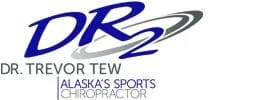"There I am," a very fit patient is saying, "out on my five-mile run, motoring my way up a steep incline. Suddenly, I feel a throbbing pain in the middle of my right shin. Oh, no, I think, not again."
As things turned out, the patient recovered from the shin splints1 quickly, but he knew he'd dodged a bullet. "Why did I get hurt?" he wanted to know. "I wasn't doing anything wrong.…What can I do to make sure this doesn't happen again?"
All very good questions. One answer is - basically − we need a plan for exercise. A powerful strategy that helps us train smart and train safe. When you're working this way − training smart and safe − then you can also train hard.
Training safe and smart means paying attention to what's happening in your body as you do your workout. "Paying attention" is a learned skill. It requires focus and repetition. Visualization is an important part of focus ─ and, if you're working on visualization, you're definitely paying attention!
You can visualize when you're running, too.
• Visualize an erect, fluid spine and strong abdominal muscles.
• Your head is upright, you're looking forward and slightly down, and your chest is open.
• Your arms are active yet relaxed, and your shoulders sit comfortably on your rib cage.
• Visualize a long stride, a soft landing, and a strong pushoff, with your leg kicking straight behind you.
Training smart means trusting your instincts, rather than listening to your ego. This is a tough one. At the time, it seems so important to do that last rep. Now, you can do that last rep if you maintain your form. Form is everything. If you have to sacrifice form in order to do those last few reps, you may get an unexpected, unwelcome result.
Likewise in running. When your form breaks down, that's a signal to slow down and recover your good mechanics. If your training is done with attention to proper, effective form, you'll be more likely, when the time comes, to run a good race at a good pace.
And, of course, we want to do these things to be healthy and well. The American College of Sports Medicine2 states, "Resistance training, particularly when incorporated into a comprehensive fitness program, reduces the risk factors associated with coronary heart disease and non-insulin-dependent diabetes, prevents osteoporosis, promotes weight loss and maintenance, improves dynamic stability and preserves functional capacity, and fosters psychological well-being."
As in much of life, there's a fine line between training hard and overtraining. Remember, the benefit of training is for the long term.
1Couture CJ, Karlson KA: Tibial Stress Injuries: Decisive Diagnosis and Treatment of "Shin Splints". Physician and Sportsmedicine 36(6):29-36, 2002
2Kraemer WJ, et al: Progression Models in Resistance Training for Healthy Adults. Med Sci Sports Exercise 34(2):364-380, 2002
